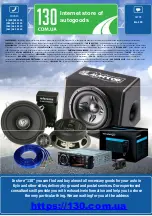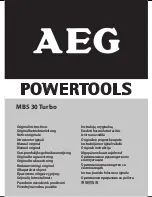
Blade Selection
A. Never use a blade so soarse that less than 3 teeth are engaged in the workpiece at any
time. (Too few teeth will cause teeth to strip out.
)
B. Never use a blade finer than required to obtain a satisfactory surface finish or satisfacto
-ry flatness. (Too many teeth engaged in the workpiece will prevent attainment of a satisfac
-tory sawing rate; frequently cause premature blade wear;frequently produce "dished" cu
-is or the cuts are neither square nor parallel.
)
C . The chart which follows is not expected to be exactly correct for al! cases. It is intended
as a general guide to good sawing practices. Your blade supplier or the qualified enginee
-rs should be your most reliable source of correct information for operational' details of
saw blades and their use.
NOTE:
THE SE·LECTION OF SAWBLADES
ts
0
1---i
•
• •
•
L
•
- -
-
I
<3mm
>5mm
>50mm
>100mrr
>105mm
>200mm
e
<0.12"
>0.2"
>2"
>4"
>6"
>8"
(HSS)14T
•
·
(HSS)6/1 OT
•
(HSS)5/8T
•
(HSS)4/6T
• •
(HSS)3/4T
•
(HSS)2/3T
•
•
(HSS)2/2T
•
(HCS)10T
•
(HCS)8T
•
(HCS)6T
•
(HCS)4T
•
(HCS)2T
• •
Remarks:HSS-High Speed Steel Sawblade
HCS-High Carbon Steel Sawblade
1 .
When standard wall pipe, tubes, channel iron and angles I beams are cut, a 1 O pitch saw
blade of wave-set type or sawblade of (HSS) 6/1 OT is frequently used to good advantage.
2 . Tubes or structure with wall thickness or web thickness of 1 /2" or more can usually use
an 8 or 6 pitch blade or sawblade of
(
HSS) 4/6T satisfactorily.
3. When rectangular solid bar is to be sawed, the work should, whenever possible, beloaded
with the thinnest cross section exposed to the blade teeth. The pitch (or number of teeth
per inch of blade) selected must provide engagement of at least 3 teeth in the workpiece.
Should application of this rule not not be possible because the thinnest cross section is too
thin, the piece must be loaded with the wider dimension exposed to the saw teeth and a
coarser blade selected from the listing of recommendations for round and square solid
bars.
2































